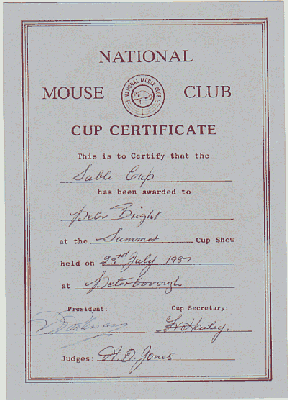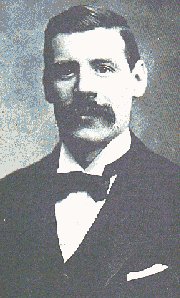I was selected for “Softcopy” exhibition at the Kimura Gallery, University of Alaska, April 3-17, 2006. I have always been fascinated by time and this exhibition was an ideal opportunity to document a period in my life when I was obsessed with genetics and had embarked on breeding a champion mouse to gain a National Mouse Club best in breed trophy. Our vast knowledge on the way living thing are made, enable us to create larger or smaller domesticated animals or other living organisms for food and pleasure.
The piece exhibited in the ‘Softcopy’ exhibition was called ‘Site Under Construction’ this was an ongoing project I started in 1999, which explored the complex idea of identity and truth. Documenting how to breed a ‘difficult colour’ – difficult colours are the colours painters love to use. I was painting with living things.
Through out the web there are thousands of extremist viewpoints all ejaculating vicious and malicious bile. By assuming an extreme identity you can adapt innocent information and create a political or moral hard-line manifesto and engage in extreme ideologies and propagate propaganda. Extremes like fascism can be alluring in times of National crisis and could be considered as a remedy for terrorism and economic crisis. (I naturally don’t agree with this but…)
Below is a copy of the original proposal
Site Under Construction. This was selected for the “Softcopy” exhibition at Kimura Gallery, University of Alaska, April 3-17, 2006.
The Quest For The Perfect Colour
Producing the perfect specimen, with the perfect colour 1985-1987
I discovered a book ‘Exhibition & Pet Mice’ by Tony Cooke L.R.I.C and was fascinated by the concept of using genetics to produce colour. A Frankenstein urge to tamper with genes and create truly living colours. Click here for brief bibliography and my source material.
The first step was to purchase the best raw material for my palette. A gentleman in Brighouse, Yorkshire had a mousery full of excellent breeding stock. I purchased the finest trio he had available. (These were Chocolate and Tans. C/T’s contain genes, which allow you to create different varieties, however I had to search high and low for the specific gene I required to create a specimen that would become a ‘Breed Champion’.)
Within a few months I had produced a good strain of mice which were healthy and of a good size. I then began taking them to shows were they were judged, ‘under the strictest rules laid down by the National Mouse Club’. I was slowly accepted into this community.
THE AIMS
- 1/ To reach a high status within this group of people.
- 2/ To question and explore their motivation.
- 3/ To study their class structure.
- 2/ To win a breed cup.
The Variety to Win the Breed Cup |
||
|
The proof of my success |
I was tempted to try and produce a tri-coloured mouse (This was genetically impossible at the time). However I settled on a Satin Sable, a type developed by Walter Maxey in the 1880’s. A difficult colour prone to obesity and death (see text below on the red gene). I found the ‘Satin’ gene in Shropshire and acquired a pathetic example that I crossed into my pedigree stock. After several failures with my experiments and selective breeding I eventually produced the beast that won the Sable Cup in July 1987.
Section on basic colour varieties and how to breed them. Their features and body confirmation have to be of a certain type. All examples that do not meet these criteria have to be destroyed, to prevent them contaminating the pure blood line. |
|
| Section on Fatal genetics…obese gene… waltzing gene. Double lethal gene
The comitee members discovered I was an Artist and asked me to become the cartoonist for the ‘National Mouse Club News’ this I did and created ‘The Diary of a Thinking Mouse’. This modest position within the organisation enabled me to observe the heirachy and social structure of this group. I was never socially accepted and was treated as an outsider. The majority of the people I came into contact with were from the North of England or the poorer suburbs of London. They were Council Workers, caretakers, labourers and retired people. As a group it would be safe to describe them as, mainly ‘Working Class’ and as is typical with this this class of society, they were extremely dull of mind and poorly educated. |
Walter Maxey – The Fancy Mouse |
|
Another view from the exhibition pdf of article in ‘The Northern Light’
Related articles
- The genetics of art? National Mouse Club (morguegallery.com)





 Biography
Biography